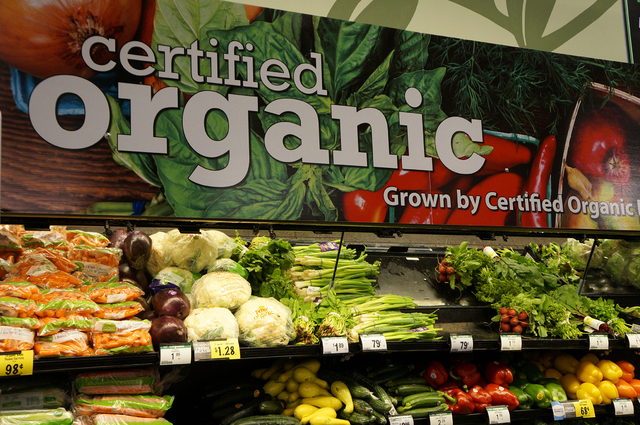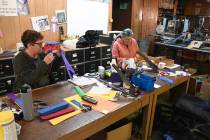Are you wasting your money buying organic?
I was buying produce last week trying to decide between buying organic tomatoes and paying the mortgage.
Food is expensive - buying organic food is astronomically expensive. We want the best for our families, if your shopping list includes organics and you want to shop wisely, read on.
The U.S. Department of Agriculture has strict guidelines for items displaying the “organic” label. Producers must comply with numerous regulations, keep meticulous records and be inspected regularly. Oh, and pay lots of fees. Produce is grown with buffer zones separating organic from conventionally grown crops, and without the use of conventional or synthetic pesticides.
Those ingested pesticides are believed to accumulate in the body contributing to health ailments including cancer. Organic producers can use natural pesticides, herbicides and fertilizers.
Keep in mind, pesticides like copper and sulfur are considered natural but can be harmful. They’re allowed and commonly used. Long before the organic revolution, the government placed strict limits on allowable pesticide residue in conventionally grown produce to assure health and safety.
Here’s the dilemma: The cost of organics is prohibitive, causing people to eat less fruits and vegetables. That’s bad. Eating a greater quantity of conventionally grown produce is preferable because the cancer fighting properties of these foods far outweigh the minimal risk presented by pesticides. So eat your veggies - organic or not!
Some fruits and vegetables may have higher levels of pesticides than others. To get the biggest bang for your buck you need to know where to save and where to spend.
Where to save – Some fruits and veggies are safe to eat when conventionally grown because they hold minimal levels of pesticides so you get minimal benefit from buying them organically. They are called the Clean 15: asparagus, avocado, cabbage, cantaloupe, cauliflower, sweet corn, eggplant, grapefruit, kiwi, mango, onions, pineapples, sweet peas and sweet potatoes.
Where to spend – When affordable and available, select organic versions of the following, referred to as the Dirty Dozen. The list changes each year, here’s the 2015 list: apples, peaches, nectarines, strawberries, grapes (Imported), celery, spinach, bell peppers, cucumbers, cherry tomatoes, snap peas, and potatoes.
In addition to your friendly neighborhood supermarket, great places to buy organic produce are the Farmer’s Market every Saturday morning at Wheeler Plaza on Highway 160 and Postal Road, and Bountiful Baskets, a not-for-profit food co-op for families that want to have more fresh produce for less money.
You order online at www.bountifulbaskets.org and for $15 for conventional or $25 for organic, you receive a generous basket of produce which varies weekly. You never know what you’re going to get so it’s kind of like Christmas and the savings are considerable.
This co-op is run by volunteers so you should expect to volunteer a few hours a month.
We all need good food to be healthy so watch for sales on organics and buy the best you can.
But don’t make yourself crazy. It’s still healthier to eat a conventionally grown apple than an organic doughnut.
Join us on Facebook at DivasOnADimeDotCom. Frugal food finds contributed by Patti Diamond, author of Divas On A Dime – Where Frugal, Meets Fabulous!, www.divasonadime.com





















